The Apple Watch Series 2 Review: Building Towards Maturity
by Brandon Chester on December 20, 2016 8:00 AM EST- Posted in
- Wearables
- Apple
- Apple Watch
- Apple Watch Series 2
Design
A watch is deeply personal in a way that smartphones generally are not. A smartphone goes into your pocket, while a watch is always visible on your wrist. Because of this, smartwatches end up being closer to clothing and jewelery than technology from a design perspective, and this makes getting the design right absolutely essential. That being said, smartwatches are not just digital watches that do some extra things, and simply copying the design of traditional watches can end up missing the opportunity to re-think how watches are made when designing a smartwatch.
The rectangular design of the Apple Watch will definitely be a point of contention for some people. Generally traditional analog watches have used a circular face because the clock is made up of vertical poles that are fixed at one point and rotate around it. While mimicking this would be a great way to make the Apple Watch look exactly like a traditional watch, it would also cripple the information density on a canvas where space is already severely limited. On a round display, any application that displays text is effectively limited to the space of a rectangle drawn within the circle, which means approximately 30% of the area is wasted in the best case. Round displays also preclude the use of table view interfaces, which are of immense importance when designing apps for space-constrained devices. Given these issues, it’s not surprising that Apple went forward with a rectangular design for the Apple Watch and its display, even if it puts the Apple Watch out of sync with many regular watches.
The one other area where the Apple Watch departs from the standards of traditional watches is its thickness. To be honest, this hasn’t posed an issue for me in general use, but several people I know have commented on the watch being significantly thicker than their regular watches. In the case of Apple Watch Series 2, the thickness has actually increased from that of the first generation, but I haven’t been able to notice this in practice despite moving from the first generation model to Series 2. As someone who wasn’t used to wearing a watch, getting used to having something on my wrist required a great deal of adjustment on its own, and at some point I simply got used to it being there and didn’t have to concern myself with its mass or thickness.
While there are some physical changes like the increased thickness, the overall aesthetics of the Apple Watch Series 2 are the same as the first generation. Although Apple has changed the functionality of the controls in watchOS 3, the watch retains the Digital Crown and action button on its right side. The Digital Crown is Apple’s solution to the problem of touch input on a smartwatch covering up all the content on the screen. It can be used to scroll vertically or horizontally through screens and individual menus, as well as to zoom when contextually relevant. In the context of a rectangular watch this is definitely the best solution I’ve seen so far, but Samsung’s Gear S3 definitely deserves a mention for applying a similar concept to their round watch where the bezel around the screen can be rotated to navigate through the UI. For users who have never had a chance to interact with the Apple Watch, it’s worth mentioning that the Digital Crown isn’t controlled like a knob by pinching it with two fingers and rotating. It has just the right amount of friction to allow rotation by rolling your finger across the top of it, without also running into problems with it being accidentally triggered.
The left side of the chassis has a pair of vertical slits, as well as two drilled holes. Like the first Apple Watch, the slits are for the watch’s internal speaker, which provides much better audio quality than you’d expect from such a tiny device. As for the two drilled holes, the second hole did not exist on the original Apple Watch and was something of a mystery when Series 2 first launched. The original Apple Watch generally did a good job of capturing the user’s voice, but there’s always room for improvement and so I originally assumed that it was for a second noise-cancelling microphone. However, the hole is actually a barometric vent to allow accurate measurements of altitude even with the Series 2’s more waterproof design. Apple does not explicitly advertise that the Series 2 comes with a barometer, but teardowns of the watch have confirmed that it includes one.
Like the original Apple Watch, the casing of the Apple Watch Series 2 comes in three different materials. Unlike the original, these are only segmented into two product lines rather than three. With the first Apple Watch, the aluminum models were the Apple Watch Sport, the steel model were just called Apple Watch, and the gold models were Apple Watch Edition. For Series 2, Apple has consolidated the aluminum and steel models under the Apple Watch title, and the Apple Watch Edition is now a white ceramic model priced at $1249 for 38mm and $1299 for 42mm. $1249 is still quite a bit more than the entry-level aluminum Series 2 model which is $369, but it’s substantially less than the $10,000 starting price of the gold Edition model.
From left to right: Sport, Classic Buckle, Milanese Loop, Woven Nylon, Leather Loop
While the case provides one half of the Apple Watch’s design, the watch bands provide the other. The Apple Watch launched with a large selection of bands, and that selection has grown over time. Our original Apple Watch review was based on the 42mm steel Apple Watch with the silver Milanese Loop band. For this review the watch I was given came with the black Woven Nylon band, which is a newer band that didn’t exist at the time the original model was launched.
To be quite honest, I’m not a huge fan of the Woven Nylon band for the Apple Watch. My original Apple Watch that I bought for investigating app development and familiarizing myself with the operating system was a first generation Apple Watch Sport with a black Sport Band. At a visual level, there’s nothing that’s really wrong with the nylon band, and it’s not uncomfortable to wear. What I dislike about it is the fact that it doesn’t go well with Apple Watch Series 2’s improved waterproofing, because it absorbs water, which makes it unsuitable for activities where the watch will be submerged as the band will be unpleasantly damp for a long period afterward. The sport band didn’t absorb water, and in fact, any water on its surface would drop off within a matter of seconds.
The Woven Nylon band also isn’t holding up as well as my Sport Band did, with the stitching becoming worn at the edges as well as where the plastic pin passes through the holes in the band to complete the loop. I would suggest opting for the model with the Sport Band when purchasing the Apple Watch, and if you’re looking into additional bands, I think the Classic Buckle, Leather Loop, and Milanese Loop bands are nice steps up from the Sport Band without breaking the bank. Series 2 is also completely compatible with existing bands, so if you’re upgrading from the previous model you don’t need to buy new bands unless you're also changing the size of the case.
Smartwatches are not compatible with winter clothing
Apple Watch Series 2 carries on the same design as the original model. If you’re not a fan of wearing a watch, or you didn’t like the original Apple Watch’s design, Apple Watch Series 2 isn’t going to do anything to change your mind. If you’re a fan of Apple’s design direction with the Apple Watch, then Series 2 will keep you happy. Based on Apple’s history I don’t think it will be surprising to see them aggressively drive down the thickness of the case in a later version, but right now the battery life constraints of a smartwatch mean that this sort of form-factor and case size won’t be going away in the near future.


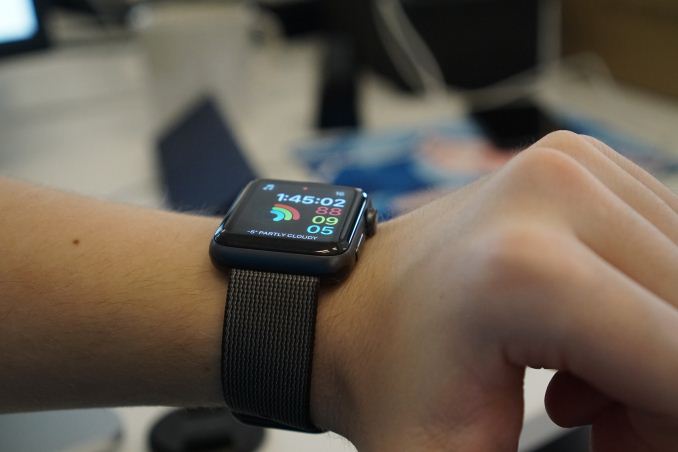
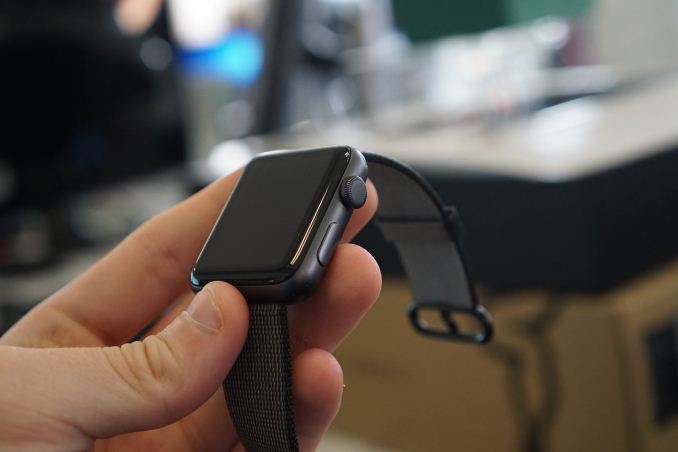
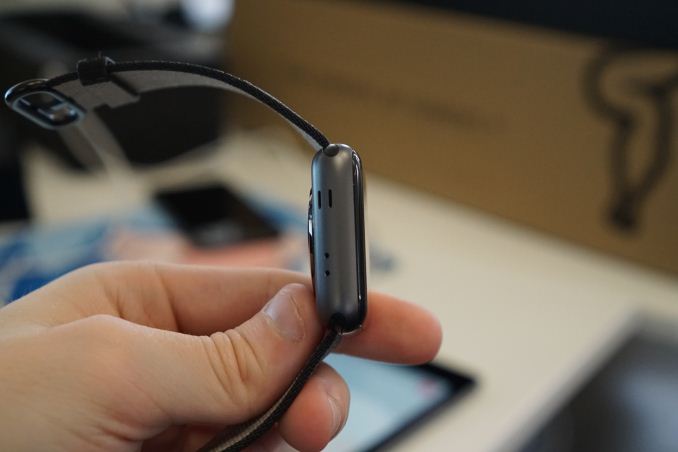
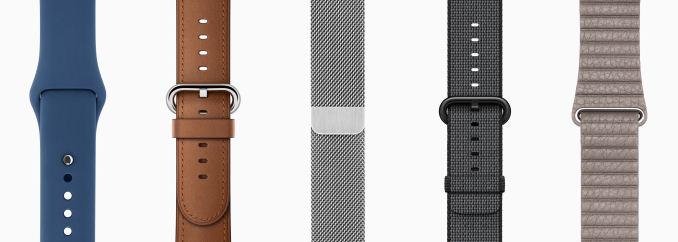
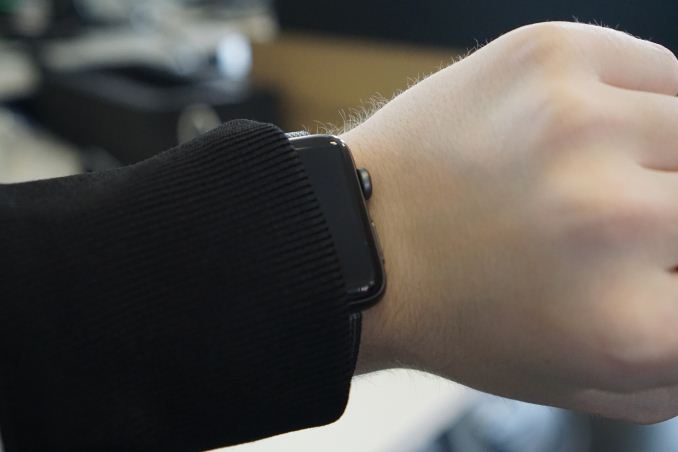








126 Comments
View All Comments
wumpus - Wednesday, December 21, 2016 - link
Can you program it at all?All I need a "smart watch" to do:
Start/stop a run tracking app.
Optional extras (biggies):
display time elapsed during run
cycle between time/heart rate/pace
show current time when not running (especially if insufficiently clunky)
display phone number/name of whose calling
I might find other apps after purchase, but those are the issues I need. Pebble was launched primarily on runkeeper integration, but failed hard (especially hard is the start/stop functionality: being able to lock your phone and put it in your pocket would be key.
michael2k - Tuesday, December 20, 2016 - link
By that measure, why buy an iPhone when you've got $400 laptops and $99 Android phones?sadsteve - Tuesday, December 20, 2016 - link
Heh, I didn't buy an iPhone. My new laptop was $650 (had separate graphics card with 2GB memory) and my Android phone was only $29.Ratman6161 - Tuesday, December 20, 2016 - link
You are asking the wrong question :). The question (for people who already own iPhones) is why buy the watch when I already own the iPhone? Keeping in mind the reviewer makes a fairly extensive case to say that the watch is an extension of the phone and not a stand alone device. So the question is, what does the watch add to the overall picture? By the way, I'm a Samsung phone user (Note 5) but I'm not buying the Samsung watch either.So what does it add to the experience? What I'm mostly interested in is fitness tracking. I could see how such a thing, or a fit bit etc could be helpful to someone just getting started. But for those of us who have been at it (fitness) for a while - going on 20 years for me - all I need is a simple heart rate monitor and I don't even use that all the time. After a while you get to know what a certain heart rate feels like based on breathing and don't really need the readout except as an occasional check. On my bike, I need speed, distance and cadence in addition to hear rate. Speed and distance could be calculated from GPS data but cadence (rotations per minute of the crank arms) has to come from a sensor on the bike. The racers and others more hard core than me also measure their power output. I don't see anything like a smart watch being able to really replace a specialized bike computer.
I also don't want one expensive device that isn't useful without also having a different expensive device.
Ratman6161 - Tuesday, December 20, 2016 - link
PS: OK, I know this is a personal bias. But my first thought when I saw the picture at the beginning of the story was "it looks like a cartoon".Cliff34 - Wednesday, December 21, 2016 - link
Personally, I don't need all the data to track speed, HR and distance. I used to do triathlon and thos things matter bc I need to know how far and fast I am training.But for the everyday user, where fitness is more for health reasons rather than athletic performance, it is a bit over kill.
Sure you can be the data geek to find out and graph how much training you've been doing. But the data is more to show than for actual athletic improvement.
During my triathlon era, we often joke that the time we spent tracking and 'analyzing' our data can be better spent putting in more hours to get the body fitter (and faster).
Right now, i am not training to race now. So i just run or exercise however I feel like it. The only data i track is my time and that you don't need any fancy gadgets.
rhysiam - Wednesday, December 21, 2016 - link
While I agree that all the fitness tracking features are "a bit overkill", in the end of the day loads of people find them helpful. It's not really about the tracking data, it's about the reward system such data makes possible. From a psychological perspective, gaining rewards, however trivial, ultimately reinforces our behaviours. There is a whole industry of repetitive, reward based games that tap into this (Pokemon GO being the most successful example of late).Fitness trackers, settings goals, gaining rewards, etc., are mostly based on a similar behaviour -> reward -> behaviour loop. While I'm sure we'd all love to be entirely self motivated and not require any external rewards, in the end of the day if those things help some people get up and active instead of hitting the snooze button again, or just staying in front of a screen, who really cares?
Flunk - Tuesday, December 20, 2016 - link
Not that many people do, Apple controlled a shrinking 11.7% of the smartphone market as of Q2 2016.IDC: http://www.idc.com/prodserv/smartphone-market-shar...
KoolAidMan1 - Thursday, December 22, 2016 - link
And yet they still dominate app revenue, mobile ad revenue, mobile internet traffic, and smartphone profits.Whoever is buying those iPhones is using them a hell of a lot more than whoever is buying whatever else is out there, that much is clear.
jospoortvliet - Sunday, December 25, 2016 - link
I would guess this has something to do with the big 'installed base' and longer life cycle for iPhones. Also because their owners are more likely to be well off (iPhone markets hare is higher in the us than India or afrika -- surprise).And absolute sales is the decreasing, relative sales is. There is a shift, though, with some countries selling very few iPhones to the point where local app development for Apple becomes less of a priority (Spain is an example). This is of course a risk for Apple- if they loose their spot of top app development target or even become not-a-target they will fall in a vicious circle of people not buying their device especially for lack of apps and developers not developing for lack of users. They are not there yet is most of the world but in some regions, as I said- getting close.